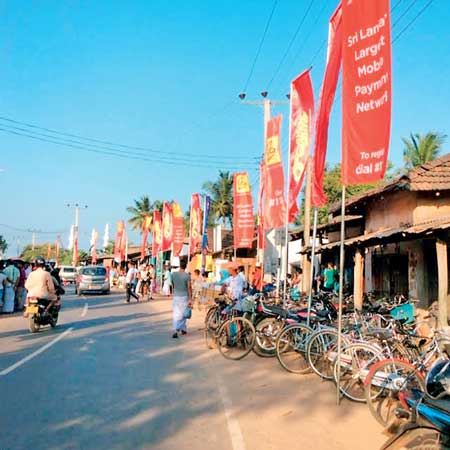Saturday Nov 22, 2025
Saturday Nov 22, 2025
Tuesday, 29 March 2016 00:00 - - {{hitsCtrl.values.hits}}
The other day we celebrated ‘Consumer Day’ in Vavuniya. I realised that many private sector companies were amazed at the sales of their products from the model outlet we had set up.
I explained that as per the last Department of Census and Statistics Household Income and Expenditure survey report on poverty, the best performing District was Vavuniya at 2.3% on head count and 2% on the attribute poor households.
Many people questioned the number given that it beat the performance of Colombo, which is reporting a head count number of 3.6% and Gampaha at 3.9%. Let me explain the details.

Vavuniya
If one carefully analyses the performance of Vavuniya, we can see that even though the poverty number is at 2.3%, the mean income is at a low ebb of Rs. 33,063, which means that the monies spent in Vavuniya on the basket of goods for food and non-food items are very different to the high income districts like Colombo and Gampaha.
However, a point to note is that in this part of the country, many get some of food from their very own garden such as vegetables, milk and eggs, which I guess skews the number reported.
As a matter of interest I spoke to the Minister in charge of Vavuniya with this information and his insight sure made me think. Apparently be it during war times or times of peace, Vavuniya played a central role for trade between the north and south. In fact even during the 30 years of war, as the hub of action for logistics and warehousing, Vavuniya was the key, which explains the low poverty number.
This took me back to the time that I was heading Economic Affairs of the Government Peace Secretariat as I remember most of the issues of transport during war times were reported from Vavuniya. The most frequent complaint was unloading and reloading of goods due to security issues on the Government and LTTE sides, which resulted in items such as potatoes and tomatoes getting spoiled. Normally in war times a bazaar closes for business after noon, but I remember Vavuniya being a hype of activity even at 4 p.m., which justifies this number.

Education
There are two pickups on the education front. Those who have never been to school is at 2.9%, which is below the national average and incidentally close to the urban trend. May be the quality of education is what needs further research. The low performance on the O/L and A/L fronts need attention and correction, which may be reflective of the quality of education, as pointed out before.
Vehicle ownership
It is interesting to see the ownership of motorcycles being very high at 32.2%, which may be reflective of the lifestyle in Vavuniya given the type of work and interests in that part of the country.
A stronger drive for setting up business in the Industrial Zone of Vavuniya will have to be priority if we are to move up motorcar ownership, which is at a low ebb of 2% – below the national average of 5.6%.
It’s also important that the movement from agriculture and trading to setting up of industrial takes place more strongly if we are increase the income levels from the current 30,000 range that exists today.
Ownership of HH items
The ownership of household items is skewed to sewing machines, which is interesting given that the penetration is as high as 84.3% as against the national average of 42.7%. May be the introduction of the handloom industry or a related business will be useful so that overall income can be increased.
However, a point to note is that for this to happen, the overall value chain needs to be developed so that products can be linked stronger to the consumer. There can be a cultural fit that is stronger based on locations.
War
The impact of the war can be seen in the high number of widowed/separated, though not specifically segregated. This amplifies the importance of a specific programme for this group of vulnerable people.
It’s strange that in Vavuniya the never married category is as high as 7.9%, which is incidentally double that of the national average. This needs to be researched and addressed from a socioeconomic perspective. The female-headed households of less than 25 years being way above the national average is somewhat of a concern, but that is the reality and the reason found out and a programme developed.
Next steps
(The author can be contacted on [email protected].)